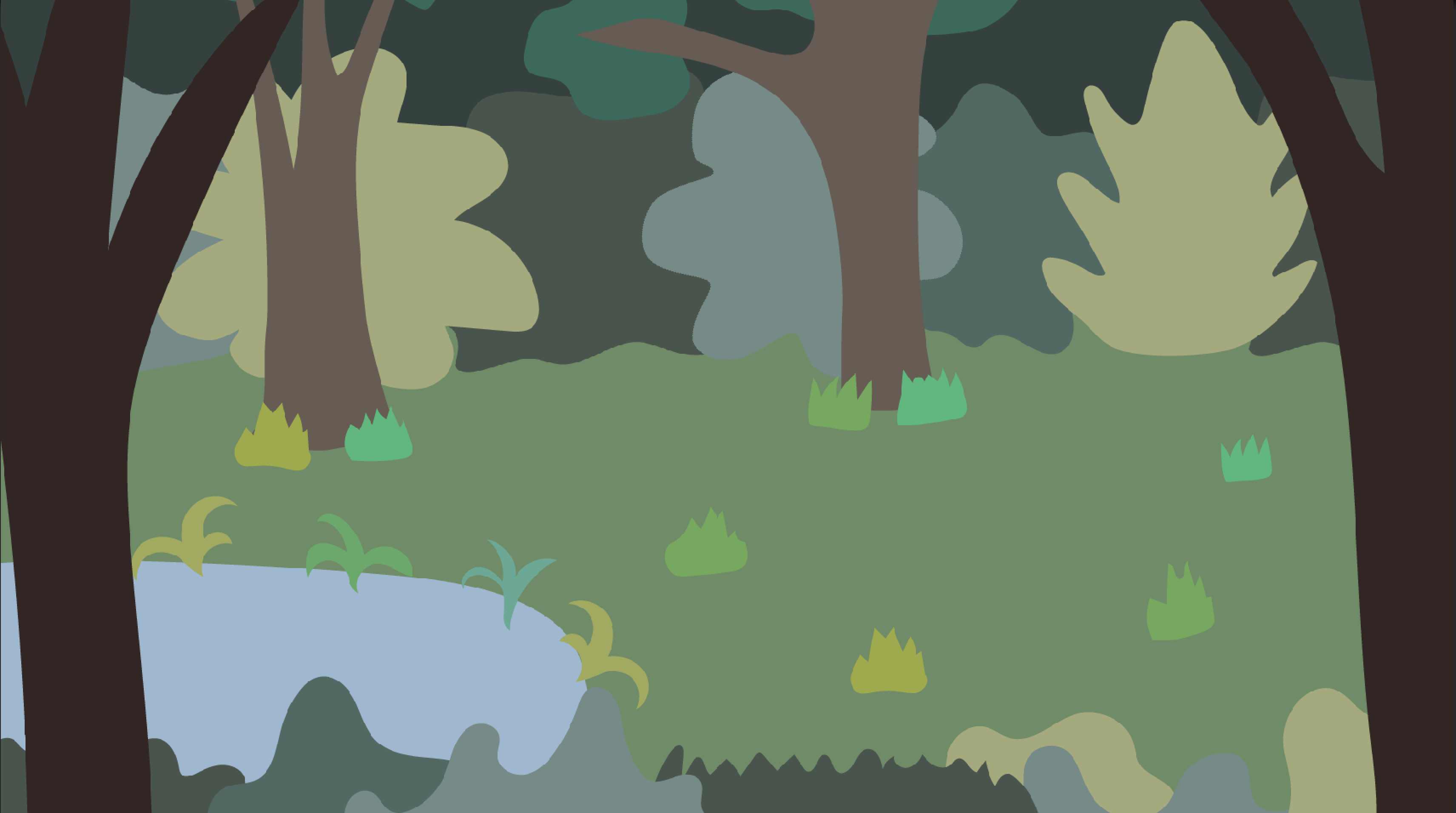
My response is playable online here
Theme :
My first thought when thinking about the concept of stillness was mindfulness and meditation apps, as well as productivity apps like Forest or Virtual Cottage, which try to encourage people to put aside technology like phones and computers, at least temporarily. While I think these are good touchstones, it wasn’t necessarily the direction I was interested in taking my response.
I next thought about the idle game Viridi, as well as the game April 10th, made as part of the Meditations project. Both of these games revolve around tending to plants, in a calm, low stakes environment, which require small, infrequent interactions from the player.
I liked the idea of making a little game that encourages player interaction with an environment, but doesn’t require it. A world that exists autonomously of the player, and so can also just be enjoyed passively as a retreat from ‘real life’.
Thinking more about this, I decided to create a digital diorama that had elements that could be interacted with, but would otherwise evoke a feeling of calm and relaxation.
Though I’d decided on my concept, I struggled to settle on a setting for the scene. I started and gave up on making a 2D Vector styled courtyard scene with birds, and a 3D low poly forest scene. I finally settled on the idea of a 2D forest scene, with the visual style and colour palette inspired by the game Mutazione
Method :
I first drafted my composition for the scene in my notebook.. Once I had a rough idea of what I wanted, I spent time in Illustrator, building up the scene one asset at a time, so I would both have assets I could export to Unity, as well as create a reference to follow when I was building the scene inside of the game engine.
Once my assets were exported, and I had created the scene in Unity, including coding some subtle movement, I turned to sound. I knew that I wanted a mix of both natural sounds, as well as a relaxing music track. The ambient forest soundscape I sourced from the BBC Archive, and the music track I found on Pixabay. I also found a mix of water splashing sound effects on Pixabay ( 1, 2, 3 ), and a longer rustling leaves effect that I trimmed into multiple smaller snippets ( 1 ).
I coded an audio manager following this Brackeys tutorial, and set it up with all my audio tracks. I set the ambient soundscape and the music track to loop continuously, and then coded the splashing and rustling sound effects to play when the user clicks on the pond and bushes respectively. I also added particle systems to simulate splashing water and falling leaves, and had these instantiated through the same piece of code that played the sound effects.
For a final touch, I added a script that would instantiate a flower on the forest floor, if the player went for more than 30 seconds without clicking, to give players a different reward for their stillness.
Context :
The goal of my response this week was to encourage contemplative play (Bennet, 2012), by creating a small interactive scene designed through both the visual and sonic elements to inspire peacefulness and relaxation. This also ties into aspects of zen games (Bogost, 2007), which talk about games ‘without scores, time limits, or other obstacles to create stress-free experiences’, and slow gaming (Remesal, 2020) which is concerned with ‘games that encourage us to relate to the environment by taking our time, without too many plans or goals’.
My response also has elements of emergent play (Costello & Edmonds, 2009), because of the way the game environment responds to the way the player interacts with it. The game rewards both users who actively engage with the environment, as well as users who engage with the environment in a more passive way.
Reflection :
This is the last APD theme, and so I wanted to make sure I ended the semester with a strong response. I think this contributed to my indecision when it came to choosing a setting and developing the composition for my scene. I wanted it to be good, and so when it wasn’t shaping up to my initial idea, I kept moving on to something else.
I’m thrilled with how my response turned out. I’m glad I decided to focus on using sound and audio cues to create the mood I wanted in the pieces, because It’s so much more effective than the visuals would have been on their own. I’m also pretty proud of how my assets turned out, even though they’re simple, because illustration is something that I’m not as confident with as I am with coding / writing.
I felt like I could have kept adding small details to this piece (I wanted to have more varied sound effects for if the player clicked on the trees and the tufts of grass / flowers, and I wanted to add a shake to the bushes and grasses on click), but after my false starts I’d already spent several days working on the response, and I was worried about it becoming too overproduced, especially since I wanted it to be a simple scene.
References :
Bennett, C. (2012) “ 'Journey' and the rewards of contemplative gaming”, Geekout. CNN. Available at: https://geekout.blogs.cnn.com/2012/03/09/journey-and-the-rewards-of-contemplative-gaming/ (Accessed: October 14, 2022).
Bogost, I., 2007. "Persuasive Games: Video Game Zen”, Game Developer. Available at: https://www.gamedeveloper.com/design/persuasive-games-video-game-zen (Accessed: October 14, 2022).
Costello, B. and Edmonds, E., 2009. “Directed and emergent play”. In: Creativity and Cognition. [online] ACM, pp.107-116. Available at: <https://dl-acm-org.ezproxy.lib.rmit.edu.au/doi/10.1145/1640233.1640252> [Accessed 14 October 2022].
Remesal, V.N.,2020. “Playable introspection and calm. Notes on slow gaming”, Presura. Available at: http://www.presura.es/blog/2020/03/21/introspeccion-y-calma-jugables-notas-sobre-el-slow-gaming/ (Accessed: October 14, 2022).
About This Work
By Eamonn Harte
Email Eamonn Harte
Published On: 12/10/2022
